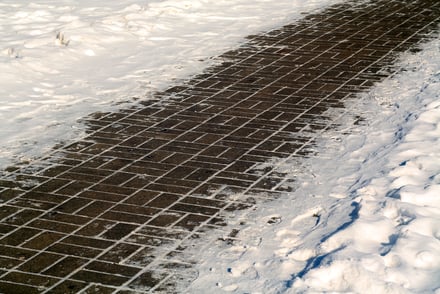Washington DC’s historic neighborhoods are well known for their historic brick houses. These 18th, 19th, and early 20th century residences tell a story of industrialization and urban growth that is well documented by modern historians and preservationists. Here's a look at the history of old brick in the nation's Capitol.
Early Techniques for Making Bricks
Bricks were a common building material used in the American colonies. They were made by hand, through a process of pressing wet clay into molds and firing and were usually made right on the building site. Many farmers pressed bricks when they had time and kept a supply on hand. By the 1870’s and 1880’s these pressed bricks were machine-made, enabling a boom construction in DC. Baltimore and Philadelphia were earlier centers for pressed brick manufacturing.
Fire Safety and Building Regulations Led to Construction of Brick Houses
Cities such as Chicago and Boston began the switch to masonry or brick building materials in response to damaging fires. In DC the post-1814 brick reconstruction of the Capitol led to the wide spread use of brick in public buildings.
Many historic brick homes in DC’s historic neighborhoods were constructed after the early 1870’s when building regulations for fire control restricted the construction of wooden buildings. By 1900 Washington had become a city of brick buildings with the construction industry supported by nearly 100 brickyards.
The use of brick in residential construction was spurred by the combined forces of late 19th century industrialization and the growth of cities. Techniques for manufacturing pressed brick assured an adequate supply, and the concern for fire safety promoted building regulations that required the use of masonry products.
Proper Repair and Restoration of Historic Brick Houses in DC
The oldest of these brick homes have solid brick walls of two or more layers called wythes, with plaster covered interior walls. Owners of these homes frequently expose the interior brick walls as part of a restoration. Unlike much modern brick construction, the older exterior load-bearing masonry walls were built of coal-fired pressed clay brick and lime mortar. They contain no iron, steel, or any other reinforcing structural support inside their walls.After decades of exposure, the mortar joints between the bricks begin to fail. Repair or restoration of historic brick buildings should be done by removing mortar between masonry joints and replacing it with lime-based mortar. If a historic building is not tuckpointed properly, it will eventually show signs of structural damage and interior water penetration.
Source: Capitol Hill Restoration Society
Renaissance Development, a leader in brick restoration in DC, specializes in brick repair and restoration projects in Capitol Hill, Shaw, Logan Circle, Adams Morgan and other areas in Washington, DC. Contact us for a free site visit and project quote.
Nov 19, 2015 5:09:00 PM


